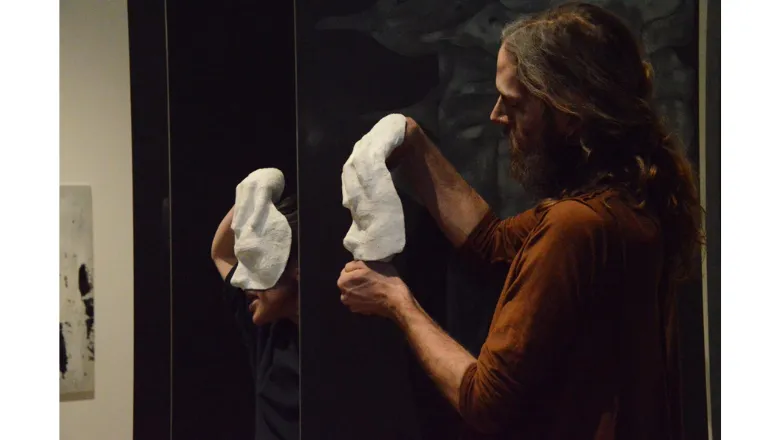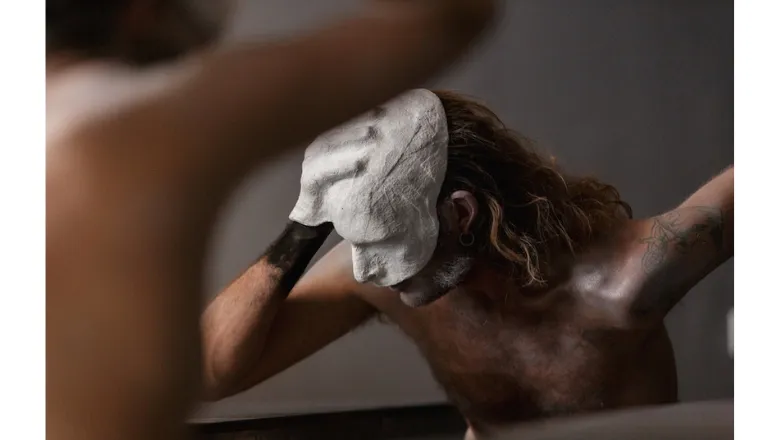Fani Parali
Parali, 2023, Mask from the Most Delicate Veil
Parali’s practice includes sculpture, sound, performance, large-scale painting, drawing and moving image. Parali creates situations where different medium components are choreographed, often through directing and collaborating with performers, where she employs the use of recorded audio that gets lip-synched. Parali wants to create a sense of intimacy, shared aloneness and warmth that can be felt through the mediation of the voices she imagines, creates and communicates. The performers and the materials aspire to transcend and overcome their identities, dimensions and realities, to be at the same time otherwordly and deeply human. Parali lives and works in London. She studied BA Sculpture at Camberwell College of Arts and completed her postgraduate studies at the Royal Academy Schools.

Mask from Let Them In, 2017, Fani Parali, plaster bandage casts

Mask from Terrace of Lungs, 2019, Fani Parali, plaster bandage casts
The three masks feature in Parali’s performances and films. Through elaborate set-designs, costumes, and invented languages, Parali creates otherworldly, mythological settings. Performances often occur in close proximity between actor and audience, staging meetings that feel both intimate and uncanny. Encountered in these environments, Parali’s performers defy descriptions relying on received notions about gender or race. The masks often function to blur the performer’s individuality or to connect them physically. Together with lip-syncing, the masks help create an impression is of ritual enactments in which bodies and merge and dissolve.
The Terrace of Lungs centres on the entwined relationship between voice and body, and their simultaneous presence and absence. Creating a complex dynamic, the work addresses intimacy and the need for support, attempting to break down boundaries that keep beings at a distance, be they place, gender, or any of the other demarcations we use to delineate who we are and what we are not. Recorded voices are mediated through the bodies of the performers, the characters emerging as part human, part animal, part spirit, and part landscape – as other. The poetic and physical encounter between these polymorphous creatures allows the viewer to enter their world.
